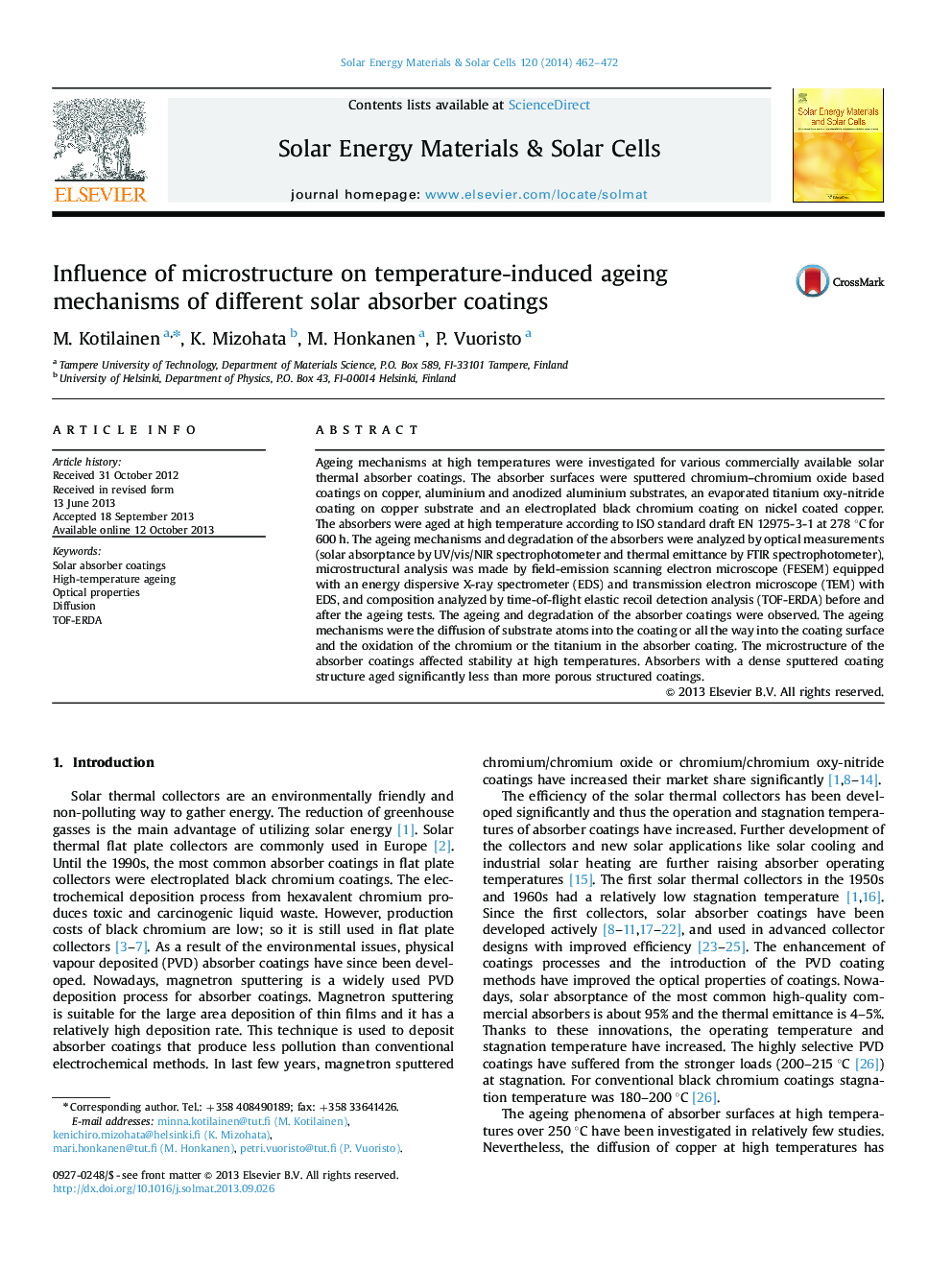| Article ID | Journal | Published Year | Pages | File Type |
|---|---|---|---|---|
| 78154 | Solar Energy Materials and Solar Cells | 2014 | 11 Pages |
•We study ageing mechanisms of Cu, Al and anodized Al absorbers at high temperatures.•Different ageing mechanisms were found for coatings and substrates.•Microstructure of absorber coating affects stability at high temperature.•Both copper and aluminium substrates are potential with dense enough coatings.
Ageing mechanisms at high temperatures were investigated for various commercially available solar thermal absorber coatings. The absorber surfaces were sputtered chromium–chromium oxide based coatings on copper, aluminium and anodized aluminium substrates, an evaporated titanium oxy-nitride coating on copper substrate and an electroplated black chromium coating on nickel coated copper. The absorbers were aged at high temperature according to ISO standard draft EN 12975-3-1 at 278 °C for 600 h. The ageing mechanisms and degradation of the absorbers were analyzed by optical measurements (solar absorptance by UV/vis/NIR spectrophotometer and thermal emittance by FTIR spectrophotometer), microstructural analysis was made by field-emission scanning electron microscope (FESEM) equipped with an energy dispersive X-ray spectrometer (EDS) and transmission electron microscope (TEM) with EDS, and composition analyzed by time-of-flight elastic recoil detection analysis (TOF-ERDA) before and after the ageing tests. The ageing and degradation of the absorber coatings were observed. The ageing mechanisms were the diffusion of substrate atoms into the coating or all the way into the coating surface and the oxidation of the chromium or the titanium in the absorber coating. The microstructure of the absorber coatings affected stability at high temperatures. Absorbers with a dense sputtered coating structure aged significantly less than more porous structured coatings.
